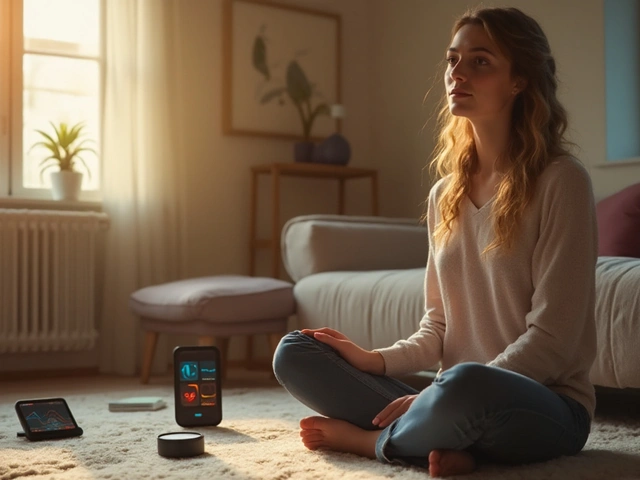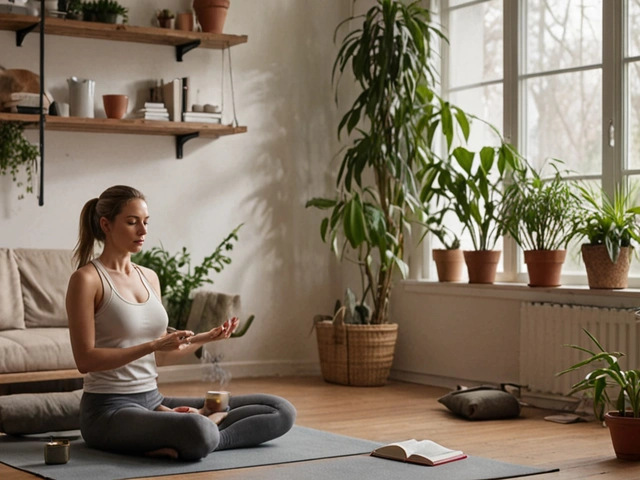Meditation for Beginners: A Simple Start You Can Stick To
You don't need to empty your mind to meditate. That idea scares people away. Meditation is a skill you build by noticing your breath, then gently bringing attention back when it wanders. Start small and the habit grows.
Pick a short goal. Commit to one to five minutes a day for the first week. Set a small timer on your phone, sit or stand comfortably, and relax your shoulders. You can sit on a chair with your feet flat, hands resting on your knees, or lie down if sitting hurts. Good posture helps your breathing stay natural.
Simple 3‑step practice
1) Breathe for three cycles: inhale through the nose for four counts, hold one, exhale for six. 2) Count breaths: label each breath “one, two, three” up to ten, then start over. 3) When thoughts come, name them “thinking” and return to the breath. Do this for your set time and stop when the timer rings. No need to judge how well you did.
Short guided sessions work well for beginners. Use a free app or a 5‑minute YouTube guided meditation. Guided voice gives structure so your mind has something to follow. Try different voices and styles until one feels natural.
Common mistakes and fixes
Thinking you must be relaxed: tension is okay. Notice it, breathe into it, and soften. Doing too much too soon: tiny daily sessions beat long sporadic ones. Using silence as pressure: guided audio or soft music can help. Expecting instant calm: meditation often reveals stress before it eases—this is normal.
Track progress in practical ways. Note how many days you meditated, not how long your mind stayed quiet. After a week, add a minute or two. After a month, try a 10‑minute session with a short body scan: move attention through feet, legs, torso, arms, neck, face, then back to breath.
Use anchors to build the habit. Attach meditation to an existing daily action: after brushing teeth, after morning coffee, or right before bed. Small cues beat strong motivation because motivation fluctuates and cues stay steady.
Bring meditation into daily life. Pause for three deep breaths before emails, meetings, or when you feel stressed. This mini‑practice resets your nervous system and makes meditation useful, not just a separate task.
If you get stuck, try group classes or a teacher for feedback. A class can correct posture, breathing, and offer a schedule. If cost is an issue, look for community centers or free online groups.
Start today with one minute. Sit, breathe, and notice. Consistency matters more than technique. Over time you’ll feel clearer, less reactive, and better able to handle stress. That’s the point—small steps that actually work.
Quick FAQs: What if my mind is too busy? Keep returning to breath without blame. What if I fall asleep? Try shorter sitting times or meditate standing. How soon will I notice benefits? Some feel calmer in days; others notice better focus after weeks. Stick with tiny steps and celebrate showing up and track progress.

How to Start Meditating: The Ultimate Beginner’s Guide for Calmer, Happier Living
Ready to find some peace? This beginner’s guide covers exactly how to start meditating, plus practical tips, easy methods, and useful facts for real-life mindfulness.




